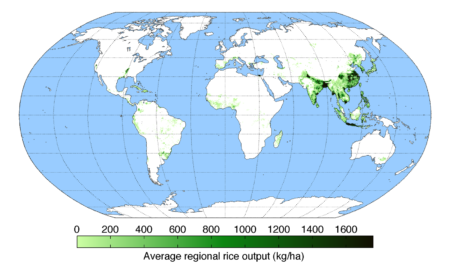- The link between language and biodiversity loss.
- Cacao genebank does more than conserve cacao diversity.
- Singapore gets into seed-banking. Not cacao, though.
- Sachs proposes big coffee fund to ensure sustainably. No word on genebanks, though.
- If you want to increase the cultivation of an insect-pollinated crop, you should diversify your agriculture.
- Sustainable not necessarily equal to organic.
Nibbles: Half-Earth, Salmon runs, Melon book, Indian genebanks
- The Half-Earth Map is better than none.
- Repurposing rice fields in the off season to help out California’s Chinook salmon.
- Photogenic melons.
- A famous community seed bank is in trouble.
- While elsewhere in India, a new genebank takes off.
Nibbles: Tutwiler interview, Cherokee seeds, Cryo, Bordeaux rules, Oz maize, Food as medicine, In situ CWR
- Ann Tutwiler (ex Bioversity DG) on the importance of agrobiodiversity.
- Cherokee Nation may deposit seeds in Svalbard.
- Millionth sample deposited in USDA livestock genebank.
- New grape varieties to be allowed in Bordeaux because of climate change.
- Hawkesbury heritage maize regenerated.
- Some Filipino rice is medicinal.
- Germany designates first CWR genetic reserves in Europe.
Go North, rice!
You might think that Queen’s Line off Drake Road, Chatham, ON N7M 5T1, Canada is the furthest north that rice grows in the world. That’s near Lake Erie, after all.
But you’d be wrong, and so was I. The latitude is 42°19’59.7″N. And there’s rice cultivation in China and central Asia, maybe even Italy’s Po valley, north of the 45th parallel, according to this map. ((Which we’ve blogged about before, natch.))
We know the furthest south that rice is grown.
Fact-checking extreme seed-saving
The story of the 800-year old squash seeds has surfaced again. We blogged about it way back, pointing out that it was, in fact, fake. But Archaeology Review does a great job of debunking it yet again. Be careful out there, people.
